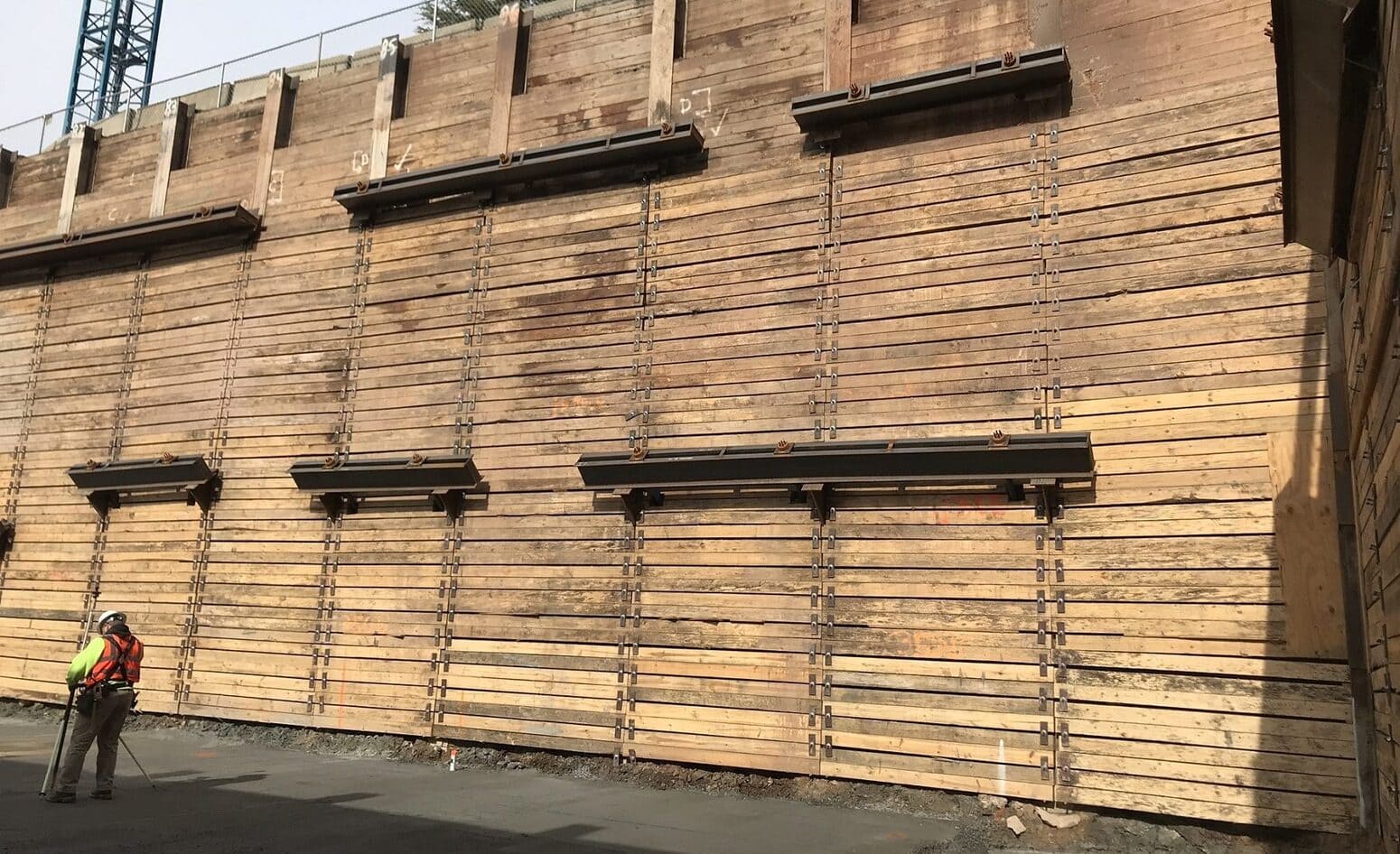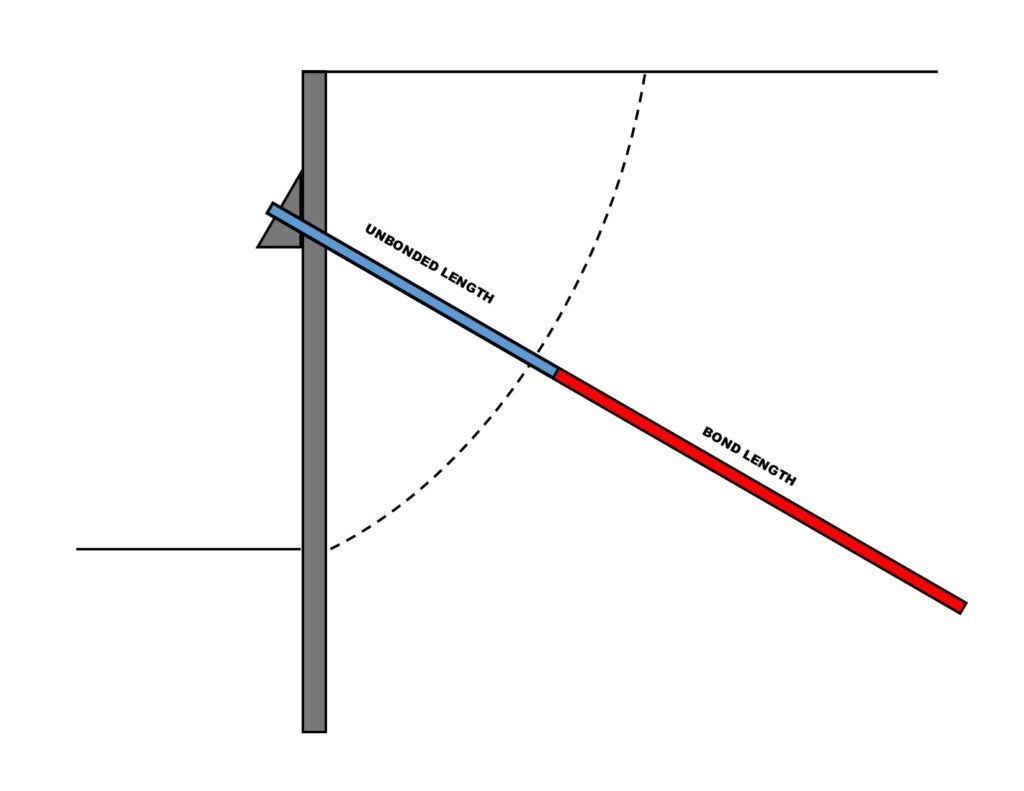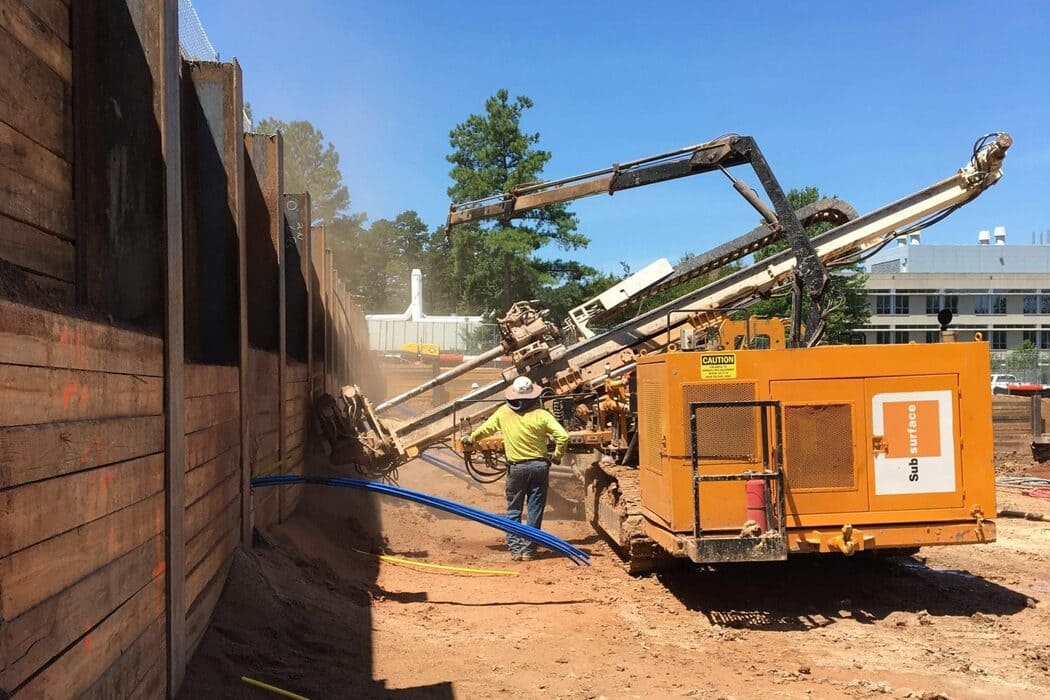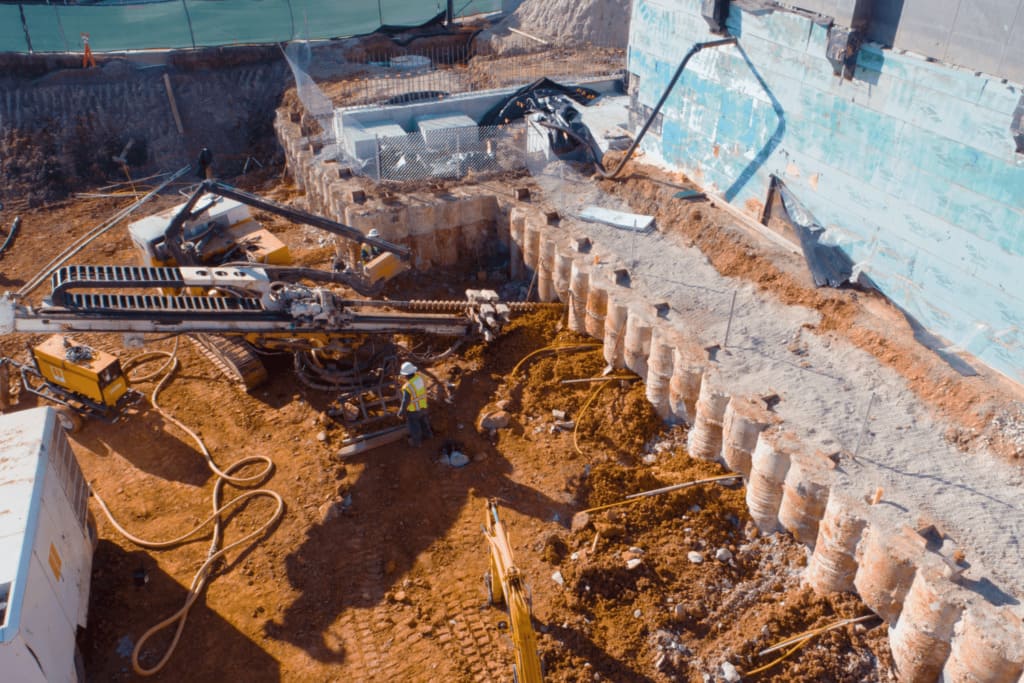Anchor design and installation for excavation support systems
Definition
FHWA defines anchors as cement grouted prestressed steel tendons that are installed in soil or rock.
Benefits
- Open Excavations: Anchors are used to provide the horizontal force necessary retain temporary or permanent shoring systems for deep excavations. They provide an open site, as opposed to internal bracing that would interfere with excavation and building construction.
- Limited Movement: They are prestressed – meaning that each row is loaded with the force needed for the full height of the excavation. In this way movement is limited when compared to non-stressed ground elements such as soil nails.

2 Rows of Anchors for a Temporary Soldier Pile Wall
Design
Anchors are typically designed using limit equilibrium analysis. Think of the sliding block experiment in high school physics lab where you may have calculated what force is required to overcome friction and move a sandpaper block along an incline. As a wedge of soil (see the curved plane in the diagram above) tries to slide into the excavation, the soil is retained by the embedment of the soldier pile, the force of the ground anchor, and the friction of the ground moving against itself. Anchors get their capacity from the friction between the grouted nail hole and the ground. The walls are designed to have a factor of safety of 1.35 to 1.5, meaning 35% to 50% more resisting force than is required to stabilize the wall.
Anchors have an unbonded length and a bonded length. While the unbonded zone is fully grouted, the steel tendons are encapsulated in a greased sheath, preventing contact with the grout and the ground. The bonded length is in full contact with the steel tendons and the grout and ground. The purpose of the unbonded length is to be certain that the wall is restrained by the back portion of the anchor located beyond the failure zone (dashed line).

Anchor: Bonded and Unbonded Lengths
Installation
Contractors typically install anchors by advancing 6″ to 10″ steel casing to the design length. With the length of the hole fully cased, steel strands are inserted into the drilled hole. The hole is then tremie grouted to remove remaining debris or ground water as the casing is extracted. Once the grout has reached a minimum specified strength (typically 2 to 3 days), the anchors are proof tested and locked off to design load.
- Drill/case 6″ to 10″ diameter holes
- Insert steel tendons into the drilled hole
- Tremie grout as the casing is removed
- Proof test and lock-off anchor

Drilling Anchors for a Soldier Pile Wall

Drilling Anchors for a Secant Pile Wall
More Information
Requirements for the Installation of Ground Anchors and Micropiles
